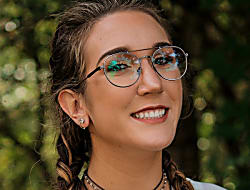- Photojournalist Chris Hondros was killed while photographing the conflict in Libya in 2011.
- He was a renowned photojournalist who covered the conflicts in Afghanistan, Iraq, Libya, Sierra Leone, Egypt and elsewhere, believing it was his responsibility to bring the story of those impacted to the world.
- His childhood friend and fellow journalist Greg Campbell was with Hondros during his final assignment, and directed a documentary tracing his life called HONDROS.
After 15 years covering major conflict zones, Pulitzer Prize-nominated photojournalist
Chris Hondros
was killed by a mortar shell on April 20, 2011 while traveling with rebels in Libya.
It was and still is an unmitigated tragedy.
Hondros' photos from conflicts in Afghanistan, Iraq, Libya, Egypt, and Liberia, among other places, constitute one of the most affecting bodies of work in photojournalism.His childhood friend, fellow journalist, and frequent story companion Greg Campbell had left Libya just a week before.
"He cared a lot about the people he shot," Campbell told Business Insider. "He always brought the focus to the people impacted by the events he covered. He became well-known for being able to find the human thread through everything."
In a war-zone for the first time in years, Campbell began filming Hondros at work to occupy his mind. After Hondros's death, Campbell decided to collect that footage and to go back to many of the places Hondros photographed to trace his life and work. The documentary, called HONDROS, will be released in March.
Campbell spoke with Business Insider about his relationship with the legendary photographer and shared some of Hondros' most iconic images.
Editor's Note: Some of the images below show graphic scenes of blood and war.


 Next Story
Next Story



Comments ()
SIGN IN WITH
FacebookGoogleEmail